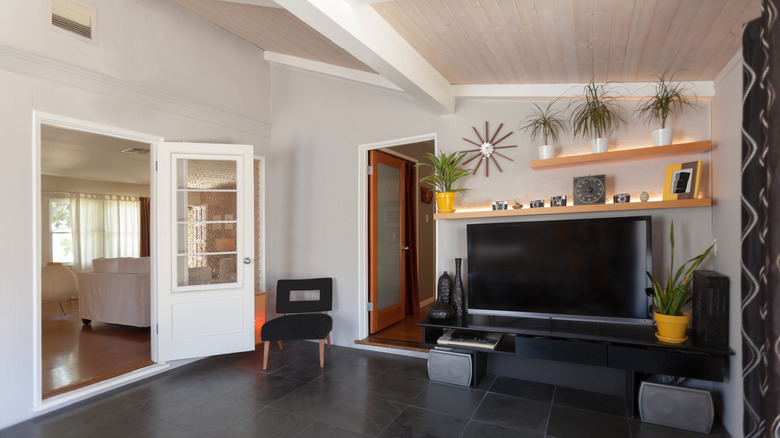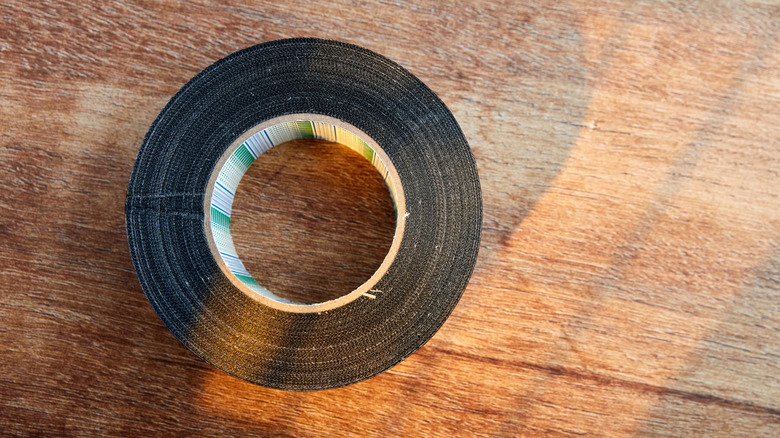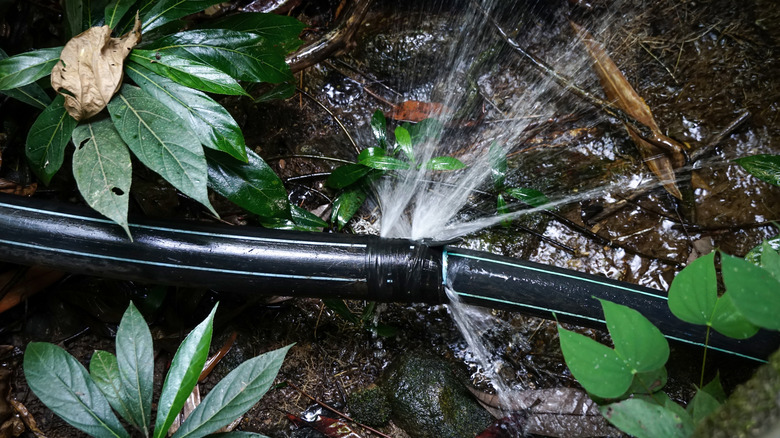The Entertainment Industry Essential You Should Be Using In Your Home
We may receive a commission on purchases made from links.
Been on any movie sets lately? Most of us haven't, but if you ever are, you may notice strips of matte tape lining tons of surfaces. It's called gaffer tape, and its behind-the-scenes work is legendary. Crews use the tape for all kinds of needs, including to secure cords, keep props in place, or label equipment. In fact, it works so well in the entertainment industry that you might want to give it a try at home.
We know what you're thinking — that's nothing a good old-fashioned roll of duct tape can't do. And while we love a good duct tape hack as much as anyone, gaffer tape is a bit different than duct tape and other similar products. It's those differences that might make you consider giving it a try.
Gaffer tape, sometimes called thick tape, is more flexible and leaves behind less residue than duct tape, making the multipurpose tape a great tool for tons of DIY and home projects. Whether you're using it to keep your own cables in place or putting a quick fix on something, the entertainment industry essential can be useful to have on hand, even if you want to stay out of the spotlight.
Advantages of gaffer tape in home projects
Gaffer tape is a versatile adhesive product with backing that's made from a thick layer of fabric, which makes it both super flexible and heavy-duty. Additionally, since it was originally designed for the entertainment industry (where aesthetics are everything and equipment can be incredibly expensive), it is formulated to be easily removable from nearly any surface — leaving behind less sticky residue than other heavy-duty tapes.
These qualities make it a natural fit for home projects like hiding or securing cables. Tape the cords in place to keep them from showing, or use the tape to bundle together a group of cords to keep them from getting tangled. You can also use the tape to label specific cords when you have several together. Plus, gaffer tape is heat-tolerant. This makes it a strong choice if you're temporarily adhering cords to something around the home that could get hot, like a monitor.
Another practical use for gaffer tape around the house is for projects where you need strength but don't want to leave behind gunk — especially important if you're a renter. For instance, you can use it if you want to put tape down so you're not scratching surfaces while moving furniture or if you're hanging decorations as you set up your home for a memorable dinner party. The lack of residue also makes it easy for a temporary mend or quick fix, like holding the handle on a broken tool or patching a hole.
Downsides to gaffer tape for home use
There are a couple of disadvantages to gaffer tape. The first is the price point. It's produced in smaller volumes than duct tape, and it's also designed for professional use. Plus, it's a versatile product that can play tons of different roles. That makes it typically about three or four times as much as a roll of duct tape, depending on the brand. At retailers like Amazon, you can typically find a roll of gaffer tape for about $20 or under. However, if you use it for several projects, the cost will add up quickly.
Additionally, projects involving water may require a different type of tape. Gaffer's tape is designed to be water-resistant and can hold up to a little moisture for temporary fixes, especially if you apply it to a clean, dry surface. But it's not formulated to be totally waterproof. If you need more protection from water and humidity, like fixing a leaking garden hose or waterproofing an opening to a window, products like duct tape, SPVC tape, or marine tape are likely stronger options.
It's also not suitable for any electrical projects. While it can withstand some heat, the tape isn't made to work with the voltage and temperatures that often occur with electrical wiring. There are many handy ways to use electrical tape around the house anyway, so having a roll available in addition to duct or gaffer tape is a good idea.


